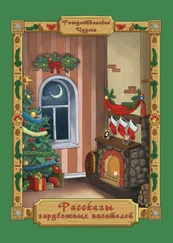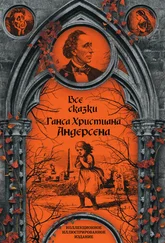Ганс Андерсен - Pictures of Sweden
Здесь есть возможность читать онлайн «Ганс Андерсен - Pictures of Sweden» — ознакомительный отрывок электронной книги совершенно бесплатно, а после прочтения отрывка купить полную версию. В некоторых случаях можно слушать аудио, скачать через торрент в формате fb2 и присутствует краткое содержание. Жанр: Путешествия и география, literature_19, Европейская старинная литература, foreign_antique, на английском языке. Описание произведения, (предисловие) а так же отзывы посетителей доступны на портале библиотеки ЛибКат.
- Название:Pictures of Sweden
- Автор:
- Жанр:
- Год:неизвестен
- ISBN:нет данных
- Рейтинг книги:4 / 5. Голосов: 1
-
Избранное:Добавить в избранное
- Отзывы:
-
Ваша оценка:
- 80
- 1
- 2
- 3
- 4
- 5
Pictures of Sweden: краткое содержание, описание и аннотация
Предлагаем к чтению аннотацию, описание, краткое содержание или предисловие (зависит от того, что написал сам автор книги «Pictures of Sweden»). Если вы не нашли необходимую информацию о книге — напишите в комментариях, мы постараемся отыскать её.
Pictures of Sweden — читать онлайн ознакомительный отрывок
Ниже представлен текст книги, разбитый по страницам. Система сохранения места последней прочитанной страницы, позволяет с удобством читать онлайн бесплатно книгу «Pictures of Sweden», без необходимости каждый раз заново искать на чём Вы остановились. Поставьте закладку, и сможете в любой момент перейти на страницу, на которой закончили чтение.
Интервал:
Закладка:
There is earth over the coffin, there is earth within it; the psalm-book with its leaves is dust the rose with all its recollections has gone to dust. But above it bloom new roses, above is sings the nightingale, and the organ plays:—we think of the old grandmother with the mild, eternally young eyes. Eyes can never die! Ours shall once again see her young, and beautiful, as when she for the first time kissed the fresh red rose which is now dust in the grave.
THE PRISON-CELLS
By separation from other men, by solitary confinement, in continual silence, the criminal is to be punished and amended; therefore were prison-cells contrived. In Sweden there were several, and new ones have been built. I visited one for the first time in Mariestad. This building lies close outside the town, by a running water, and in a beautiful landscape. It resembles a large white-washed summer residence, window above window.
But we soon discover that the stillness of the grave rests over it. It is as if no one dwelt here, or like a deserted mansion in the time of the plague. The gates in the walls are locked: one of them is opened for us: the gaoler stands with his bunch of keys: the yard is empty, but clean—even the grass weeded away between the stone paving. We enter the waiting-room, where the prisoner is received: we are shown the bathing-room, into which he is first led. We now ascend a flight of stairs, and are in a large hall, extending the whole length and breadth of the building. Galleries run along the floors, and between these the priest has his pulpit, where he preaches on Sundays to an invisible congregation. All the doors facing the gallery are half opened: the prisoners hear the priest, but cannot see him, nor he them. The whole is a well-built machine—a nightmare for the spirit. In the door of every cell there is fixed a glass, about the size of the eye: a slide covers it, and the gaoler can, unobserved by the prisoner, see everything he does; but he must come gently, noiselessly, for the prisoner's ear is wonderfully quickened by solitude. I turned the slide quite softly, and looked into the closed space, when the prisoner's eye immediately met mine. It is airy, clean, and light within the cell, but the window is placed so high that it is impossible to look out of it. A high stool, made fast to a sort of table, and a hammock, which can be hung upon hooks under the ceiling, and covered with a quilt, compose the whole furniture.
Several cells were opened for us. In one of these was a young, and extremely pretty girl. She had lain down in her hammock, but sprang out directly the door was opened, and her first employment was to lift her hammock down, and roll it together. On the little table stood a pitcher with water, and by it lay the remains of some oatmeal cakes, besides the Bible and some psalms.
In the cell close by sat a child's murderess. I saw her only through the little glass in the door. She had had heard our footsteps; heard us speak; but she sat still, squeezed up into the corner by the door, as if she would hide herself as much as possible: her back was bent, her head almost on a level with her lap, and her hands folded over it. They said this unfortunate creature was very young. Two brothers sat here in two different cells: they were punished for horse stealing; the one was still quite a boy.
In one cell was a poor servant girl. They said: "She has no place of resort, and without a situation, and therefore she is placed here." I thought I had not heard rightly, and repeated my question, "why she was here," but got the same answer. Still I would rather believe that I had misunderstood what was said—it would otherwise be abominable.
Outside, in the free sunshine, it is the busy day; in here it is always midnight's stillness. The spider that weaves its web down the wall, the swallow which perhaps flies a single time close under the panes there high up in the wall—even the stranger's footstep in the gallery, as he passes the cell-doors, is an event in that mute, solitary life, where the prisoners' thoughts are wrapped up in themselves. One must read of the martyr-filled prisons of the Inquisition, of the crowds chained together in the Bagnes, of the hot, lead chambers of Venice, and the black, wet gulf of the wells—be thoroughly shaken by these pictures of misery, that we may with a quieter pulsation of the heart wander through the gallery of the prison-cells. Here is light, here is air;—here it is more humane. Where the sunbeam shines mildly in on the prisoner, there also will the radiance of God shine into the heart.
BEGGAR-BOYS
The painter Callot—who does not know the name, at least from Hoffmann's "in Callot's manner?"—has given a few excellent pictures of Italian beggars. One of these is a fellow, on whom the one rag lashes the other: he carries his huge bundle and a large flag with the inscription, "Capitano de Baroni." One does not think that there can in reality be found such a wandering rag-shop, and we confess that in Italy itself we have not seen any such; for the beggar-boy there, whose whole clothing often consists only of a waistcoat, has in it not sufficient costume for such rags.
But we see it in the North. By the canal road between the Venern and Vigen, on the bare, dry rocky plain there stood, like beauty's thistles in that poor landscape, a couple of beggar-boys, so ragged, so tattered, so picturesquely dirty, that we thought we had Callot's originals before us, or that it was an arrangement of some industrious parents, who would awaken the traveller's attention and benevolence. Nature does not form such things: there was something so bold in the hanging on of the rags, that each boy instantly became a Capitano de Baroni.
The younger of the two had something round him that had certainly once been the jacket of a very corpulent man, for it reached almost to the boy's ancles; the whole hung fast by a piece of the sleeve and a single brace, made from the seam of what was now the rest of the lining. It was very difficult to see the transition from jacket to trowsers, the rags glided so into one another. The whole clothing was arranged so as to give him an air-bath: there were draught holes on all sides and ends; a yellow linen clout fastened to the nethermost regions seemed as if it were to signify a shirt. A very large straw hat, that had certainly been driven over several times, was stuck sideways on his head, and allowed the boy's wiry, flaxen hair to grow freely through the opening where the crown should have been: the naked brown shoulder and upper part of the arm, which was just as brown, were the prettiest of the whole.
The other boy had only a pair of trowsers on. They were also ragged, but the rags were bound fast into the pockets with packthread; one string round the ancles, one under the knee, and another round about the waist. He, however, kept together what he had, and that is always respectable.
"Be off!" shouted the Captain, from the vessel; and the boy with the tied-up rags turned round, and we—yes, we saw nothing but packthread, in bows, genteel bows. The front part of the boy only was covered: he had only the foreparts of trowsers—the rest was packthread, the bare, naked packthread.
VADSTENE
In Sweden, it is not only in the country, but even in several of the provincial towns, that one sees whole houses of grass turf or with roofs of grass turf; and some are so low that one might easily spring up to the roof, and sit on the fresh greensward. In the early spring, whilst the fields are still covered with snow, but which is melted on the roof, the latter affords the first announcement of spring, with the young sprouting grass where the sparrow twitters: "Spring comes!"
Between Motala and Vadstene, close by the high road, stands a grass-turf house—one of the most picturesque. It has but one window, broader than it is high, and a wild rose branch forms the curtain outside.
Читать дальшеИнтервал:
Закладка:
Похожие книги на «Pictures of Sweden»
Представляем Вашему вниманию похожие книги на «Pictures of Sweden» списком для выбора. Мы отобрали схожую по названию и смыслу литературу в надежде предоставить читателям больше вариантов отыскать новые, интересные, ещё непрочитанные произведения.
Обсуждение, отзывы о книге «Pictures of Sweden» и просто собственные мнения читателей. Оставьте ваши комментарии, напишите, что Вы думаете о произведении, его смысле или главных героях. Укажите что конкретно понравилось, а что нет, и почему Вы так считаете.



![Ганс Андерсен - Ганс Чурбан[другой перевод]](/books/95480/gans-andersen-gans-churban-drugoj-perevod-thumb.webp)




